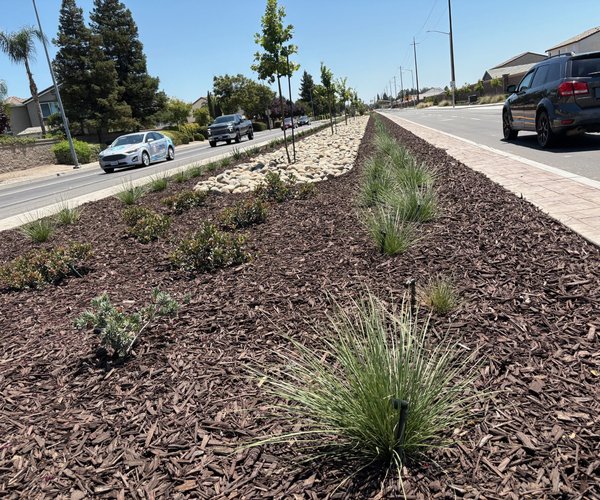Step up efforts to address homeless issues.
Widen Main Street between Yosemite Avenue and Alameda Street to four lanes post haste.
Identify new revenue to allow the city to deliver more robust services.
Those are the top three priorities the Manteca City Council expects to be addressed by municipal staff.
They were identified Wednesday during a goal setting workshop the council conducted at the Manteca Transit Center. The official wording of the goals along with at least the framework of an identified path on how to pursue and accomplish them will be presented to the City Council in April for more of an official adoption.
But unlike previous goal setting efforts, the current council — and senior city staff — vows it will be different.
That’s because the council has agreed that they will focus efforts on accomplishing the top goals instead of trying to move a multitude of projects forward at the same time while earmarking slices of available money toward them that’s enough to start endeavors but not enough to complete them.
The widening of Main Street is the best illustration of how the council is banking that their direction that Mayor Ben Cantu has pointed out is different than those of previous councils is expected to work.
Back in 2016 when the staff was directed to come up with a plan to remove the bulbs in the 100 block of North Main, the public works department came up with a plan that would place two lanes heading south and one lane north at a cost of $1 million.
Councilman Gary Singh led the charge to stop the project as staff designed pointing out it would be a costly stop gap measure at best. Singh wanted the ultimate street configuration that would be needed to maximize traffic flow and volume. Staff at the time countered such improvements wouldn’t be needed for 10 years or more.
Singh pressed the issue with his council colleagues arguing not only was the project as recommended by staff not going to solve the real problem in the long run but he didn’t want to create a situation where the city would spent $1 million in 2016 and then come back 10 or so years and spend even more money to modify the block in question. Singh successfully argued that the tourniquet on the city’s main north-south commercial corridor — the two lanes that pass through downtown and open up back to four lanes once they clear the central district — had to be replaced and it made more sense to do it now and not spend money for an interim stop gap measure and then spend even more money again tearing out the new improvements. The 100 block of North Main Street has been reconfigured three times since the early 1990s.
In 2017, the council voted unanimously to proceed with making Main Street four lanes through downtown. They made it clear that based on the significant grumbling in the community about the traffic tourniquet that they wanted it to be a priority.
Although primary designs have been done, the project has not gone forward. That’s because other projects came up the council said was a priority and the fact there wasn’t enough money identified to complete the work.
The city earmarked $1.3 million for the project and has spent $108,000 so far. The remaining $1.2 million is not enough to complete 100 percent of the budget.
Acting City Manager Miranda Lutzow on Thursday noted Acting Public Works Director Koosun Kim has made the preliminary determination that the construction design work could be done in house to reduce the overall costs and reduce the length of time for the project to physically break ground.
Lutzow also said city staff will look at money allocated within the budget. It could mean other projects that have money set aside but aren’t as high of a priority could see funds shifted to the Main Street effort so it can be done in a timely manner.
It is the same approach the staff used last month to follow through on a directive from the council to reconstruct the worst segment of pavement in Manteca — Lathrop Road between Airport Way and a point 200 feet of London Avenue. The 2,500-foot long pavement has already gone to bid with the plan to do the work this summer. The bulk of the $1.4 million to pay for it was shifted from lower priority projects.
The frustration that previous councils had with staff not being able to move projects forward in what various elected leaders viewed as a timely manner was best illustrated by the “missing link” of Atherton Drive that was completed last year between Union Road and Airport Way.
It had been identified as a priority project a decade ago. At one point it had full funding and was ready to go but the money was shifted to Austin Road for a project that ended up not materializing. The money was re-allocated to Atherton Drive four years ago but nothing was done
Councilwoman Debby Moorhead over the years had repeatedly been pushing hard for the road project to ease traffic issues in residential neighborhoods along Woodward Avenue by people trying to avoid driving than 120 Bypass during the afternoon commute as well as open the area for commercial development.
After years of pushing she was finally able to convince the rest of the council at the time that Atherton Drive was indeed the top priority as well as making sure staff understood that to be the case.
To contact Dennis Wyatt, email dwyatt@mantecabulletin.com






